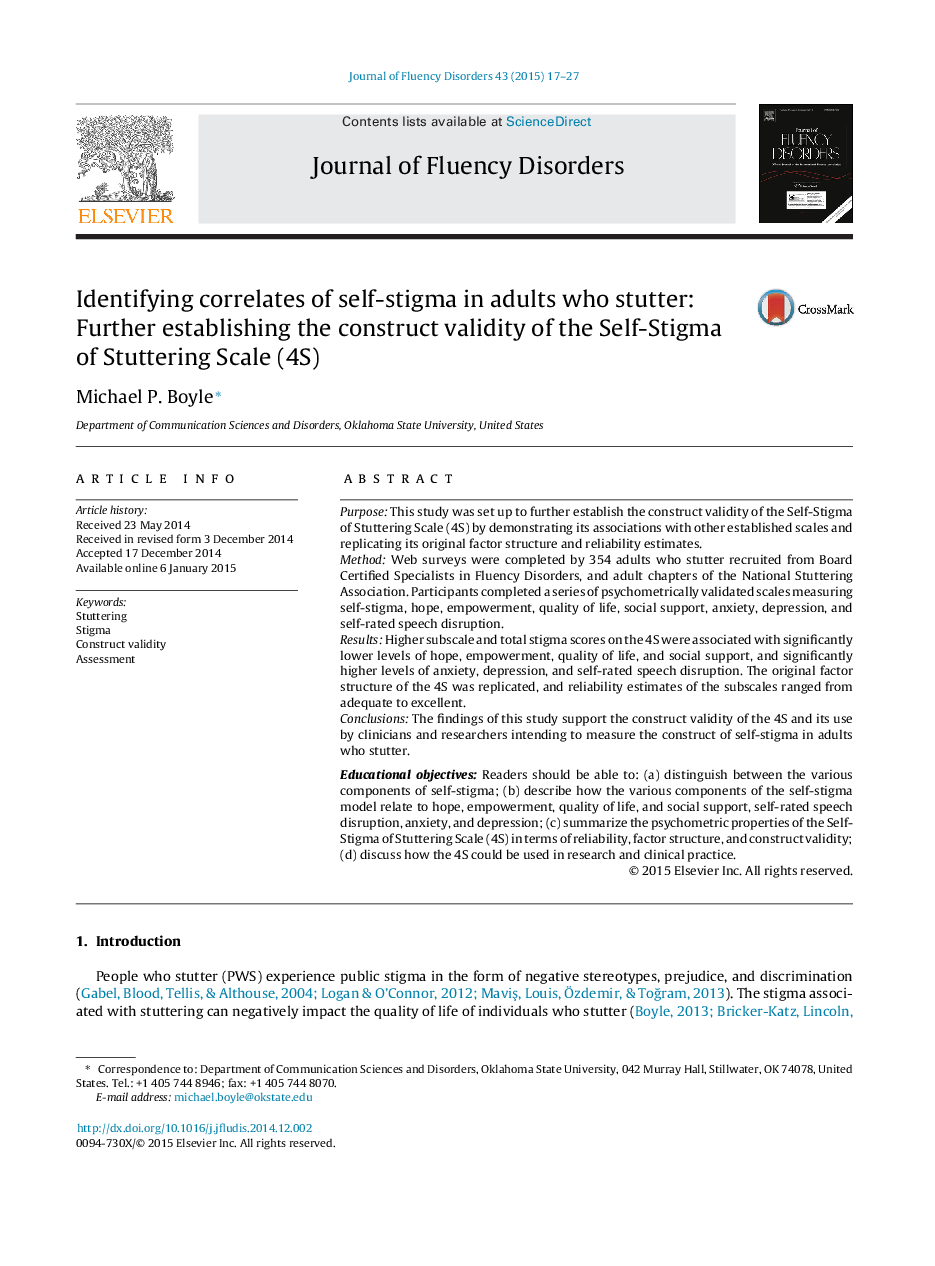| کد مقاله | کد نشریه | سال انتشار | مقاله انگلیسی | نسخه تمام متن |
|---|---|---|---|---|
| 911315 | 1473147 | 2015 | 11 صفحه PDF | دانلود رایگان |

• Construct validity of the 4S was evaluated in a sample of people who stutter.
• Factor structure of the 4S and internal consistency estimates were replicated.
• 4S was negatively linked to hope, empowerment, social support, and quality of life.
• 4S was positively linked to anxiety, depression, and self-rated speech disruption.
• Construct validity of the 4S was further supported in this study.
PurposeThis study was set up to further establish the construct validity of the Self-Stigma of Stuttering Scale (4S) by demonstrating its associations with other established scales and replicating its original factor structure and reliability estimates.MethodWeb surveys were completed by 354 adults who stutter recruited from Board Certified Specialists in Fluency Disorders, and adult chapters of the National Stuttering Association. Participants completed a series of psychometrically validated scales measuring self-stigma, hope, empowerment, quality of life, social support, anxiety, depression, and self-rated speech disruption.ResultsHigher subscale and total stigma scores on the 4S were associated with significantly lower levels of hope, empowerment, quality of life, and social support, and significantly higher levels of anxiety, depression, and self-rated speech disruption. The original factor structure of the 4S was replicated, and reliability estimates of the subscales ranged from adequate to excellent.ConclusionsThe findings of this study support the construct validity of the 4S and its use by clinicians and researchers intending to measure the construct of self-stigma in adults who stutter.Educational objectives: Readers should be able to: (a) distinguish between the various components of self-stigma; (b) describe how the various components of the self-stigma model relate to hope, empowerment, quality of life, and social support, self-rated speech disruption, anxiety, and depression; (c) summarize the psychometric properties of the Self-Stigma of Stuttering Scale (4S) in terms of reliability, factor structure, and construct validity; (d) discuss how the 4S could be used in research and clinical practice.
Journal: Journal of Fluency Disorders - Volume 43, March 2015, Pages 17–27